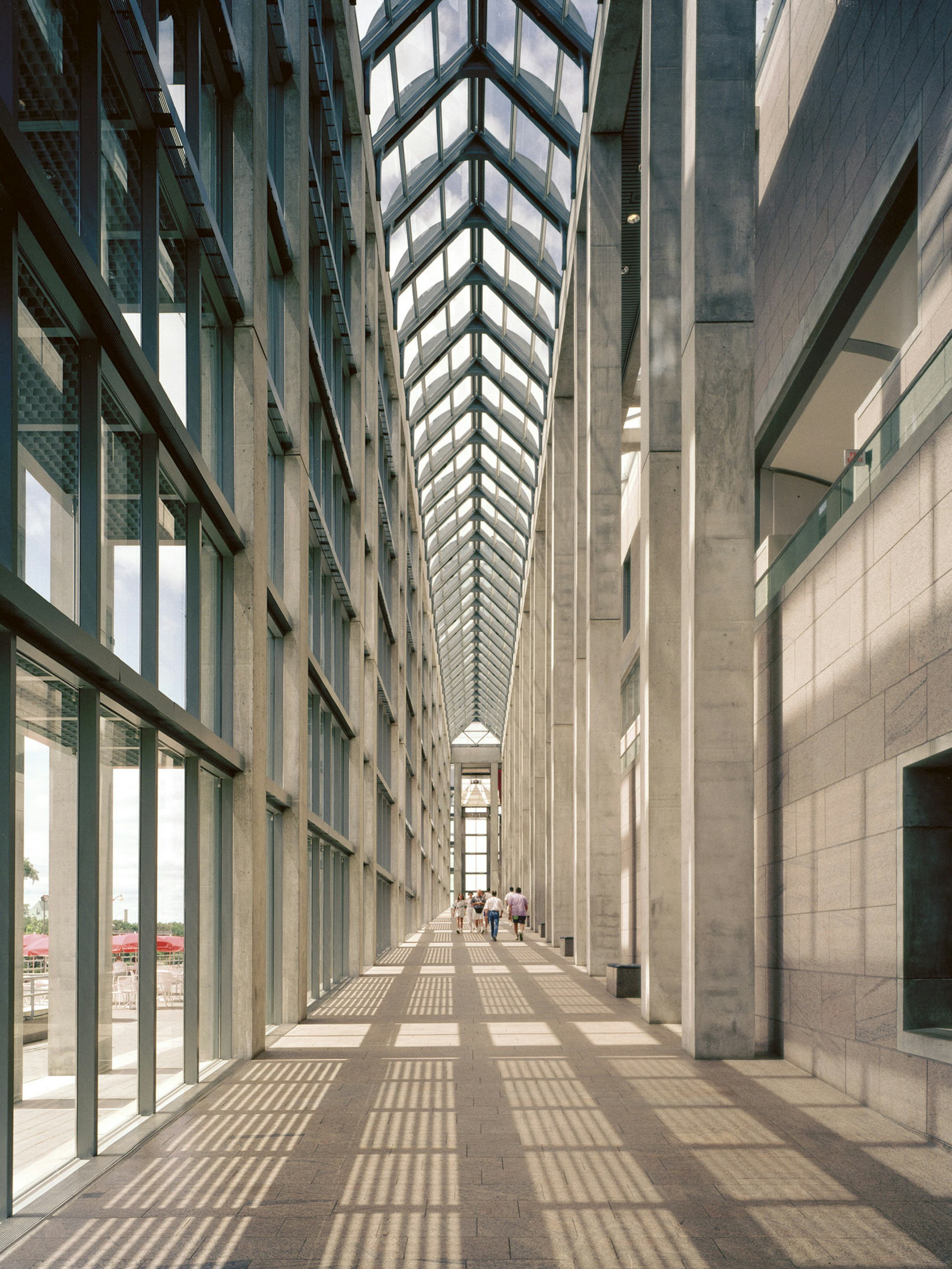National Gallery of Canada
The National Gallery houses 132,700 square feet of galleries as well as facilities for educational programs, conservation, art storage, and administration. A gently ramping colonnade leads from the main entrance on Sussex Drive to the Great Hall with sweeping views of Parliament Hill and the Ottawa River. From the Great Hall, the promenade forms a second axis leading to a second great volume Rotunda. All galleries are entered from either the Great Hall or the Rotunda. Beyond the Rotunda, a continuation of the promenade axis leads to a separate curatorial wing, connected to the main building by bridges at each principal level. The large areas of collections and exhibition spaces are organized into legible groups of galleries, each with an individual character appropriate to its relationship to the collection.
Daylight from each of the three unique courtyards filters into adjacent galleries, creating a distinct character appropriate for each part of the collection.
Views of the concourse circulation and Great Hall.
The 140 foot high Great Hall is situated at the juncture of all of the galleries and acts as the principal public and ceremonial space. It can seat 300 for dinner and 1500 for receptions and events.
View of the contemporary gallery with diffuse light from both the courtyard and skylight sources.













